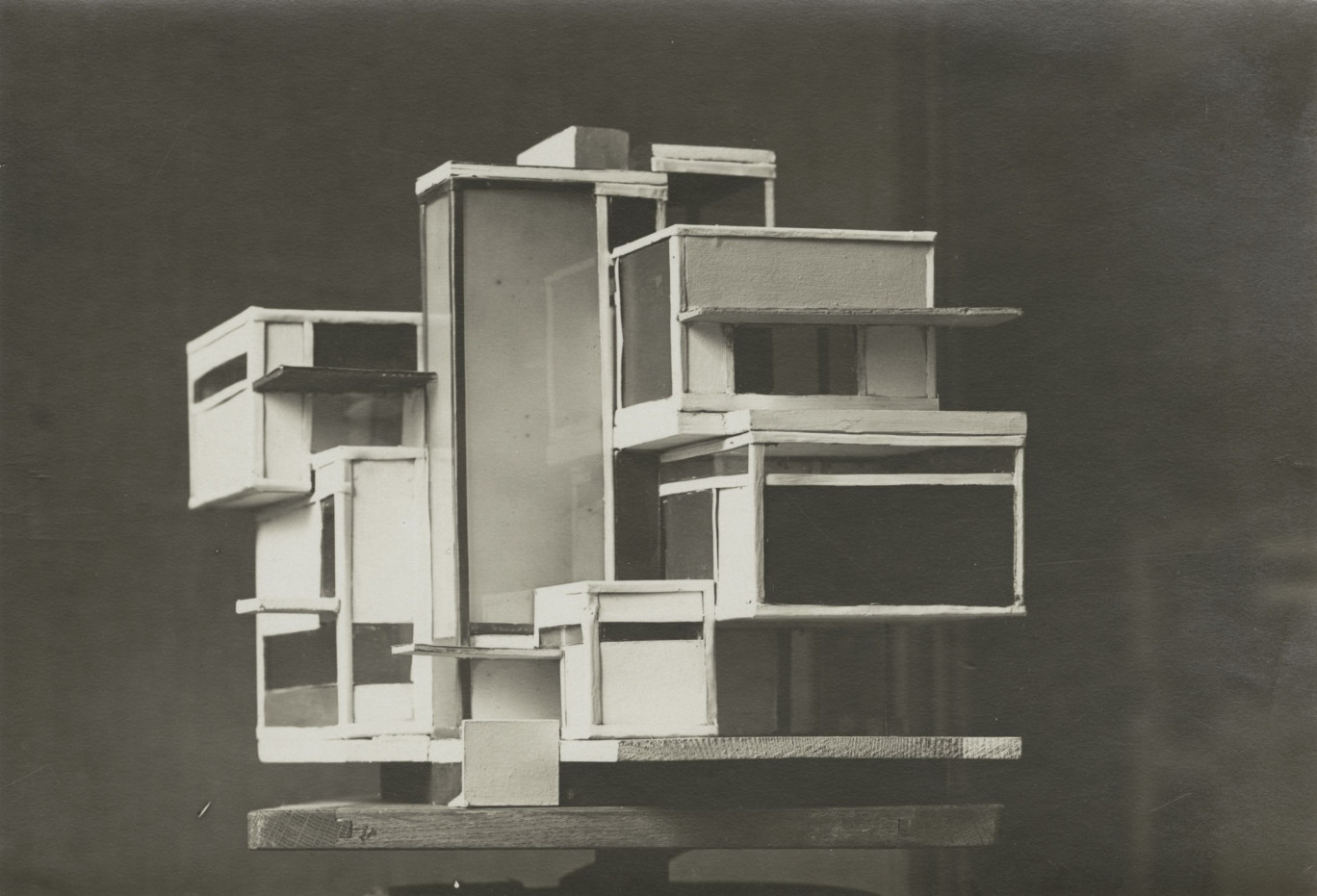Architecture and Interiors.
The architecture and interiors of De Stijl are famous around the world. Dutch architects and designers like Gerrit Rietveld, Theo van Doesburg, Cornelis van Eesteren and J.J.P. Oud blazed the trail for generations of progressive thinkers who came after them. The historical roots of De Stijl are less well-known. This summer, the Gemeentemuseum Den Haag and Het Nieuwe Instituut present an overview of drawings, architectural models and examples of furniture by members of the influential art movement. Exhibited side by side for the first time ever, the works offer surprising insights: what seems simple and straightforward at first sight proves to be ambiguous and complex. And what appears new may turn out not to have been.
By exploring four themes – colour, space, transparency and technical innovation – the exhibition will trace the roots of De Stijl right back into the 19th century. It will show how much De Stijl artists and designers owed to past generations: they appropriated existing techniques and re-interpreted concepts, themes and ideas advanced by previous engineers and craftsmen. As the same time, the exhibition will also reveal differences: unlike their predecessors and contemporaries, who tended to look for functional solutions to problems, the members of De Stijl regarded art as the solution in itself.
The desire for Style will bring together drawings, architectural models, paintings, objects and furniture by artists associated with De Stijl and show them alongside design drawings and three-dimensional objects produced in previous decades. By doing so, it will tease out the way in which members of De Stijl created a radically new formal idiom while at the same time exploiting existing techniques and materials in the implementation of their ideas. Many of the notions advanced by De Stijl architects and designers will be shown to have determined the course taken by international architecture later in the century and still to be influencing our own domestic and public lives tod.
The exhibition will show that the new world that the De Stijl designers were trying to create did not necessarily come out of the blue. Their designs were forward-looking, deliberately unconventional and offbeat, but they were also rooted in the past. For example, advances in technology and new materials had allowed facades and structures to be opened up and shop frontages with uninterrupted expanses of glass to be constructed ever since the late 19th century. Furniture designer and architect Gerrit Rietveld (1888-1964) used simple timbers and plywood to create his formally innovative structures. Oud rearranged the functional features of building frontages (lintels, windows and doors) to create uncluttered architectural compositions resembling abstract paintings. And the clean lines and ‘machine aesthetic’ (to use Van Doesburg’s term) of De Stijl architecture were already apparent in some sanatorium and hospital interiors.
